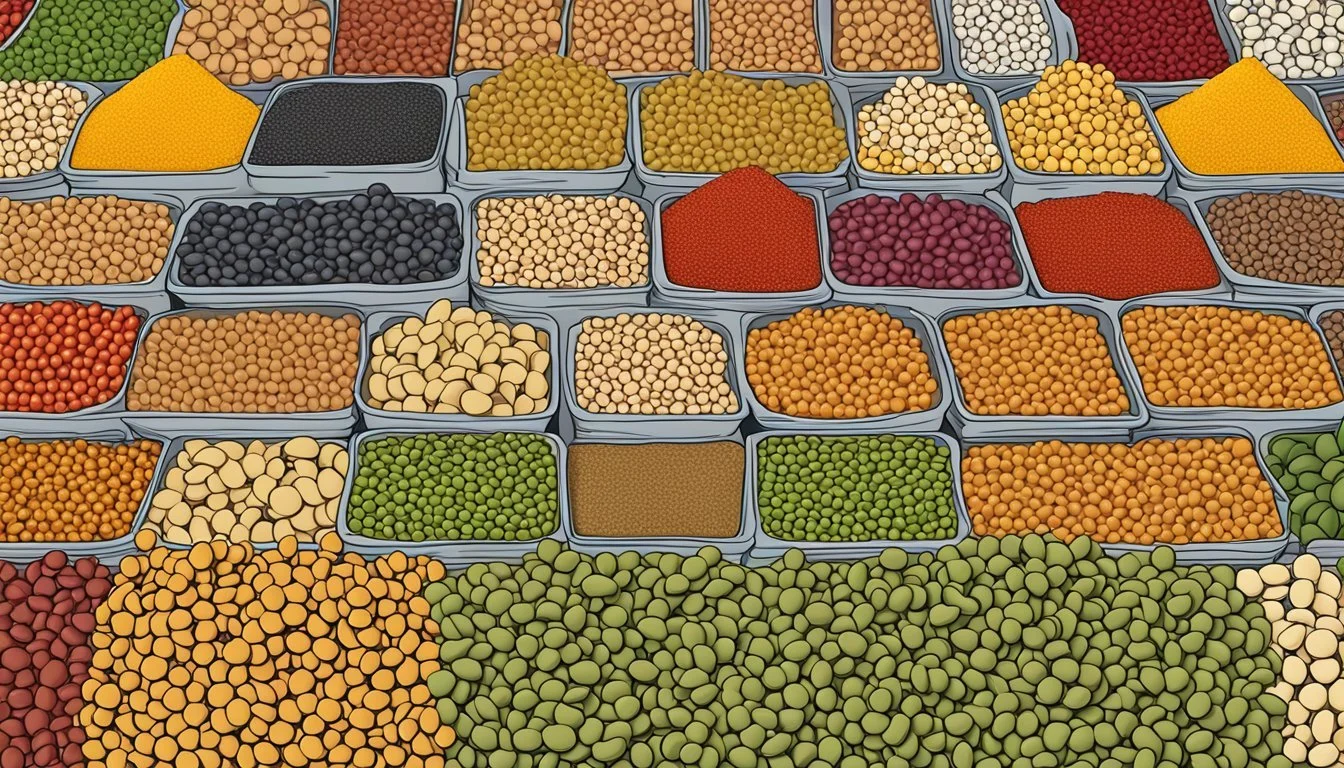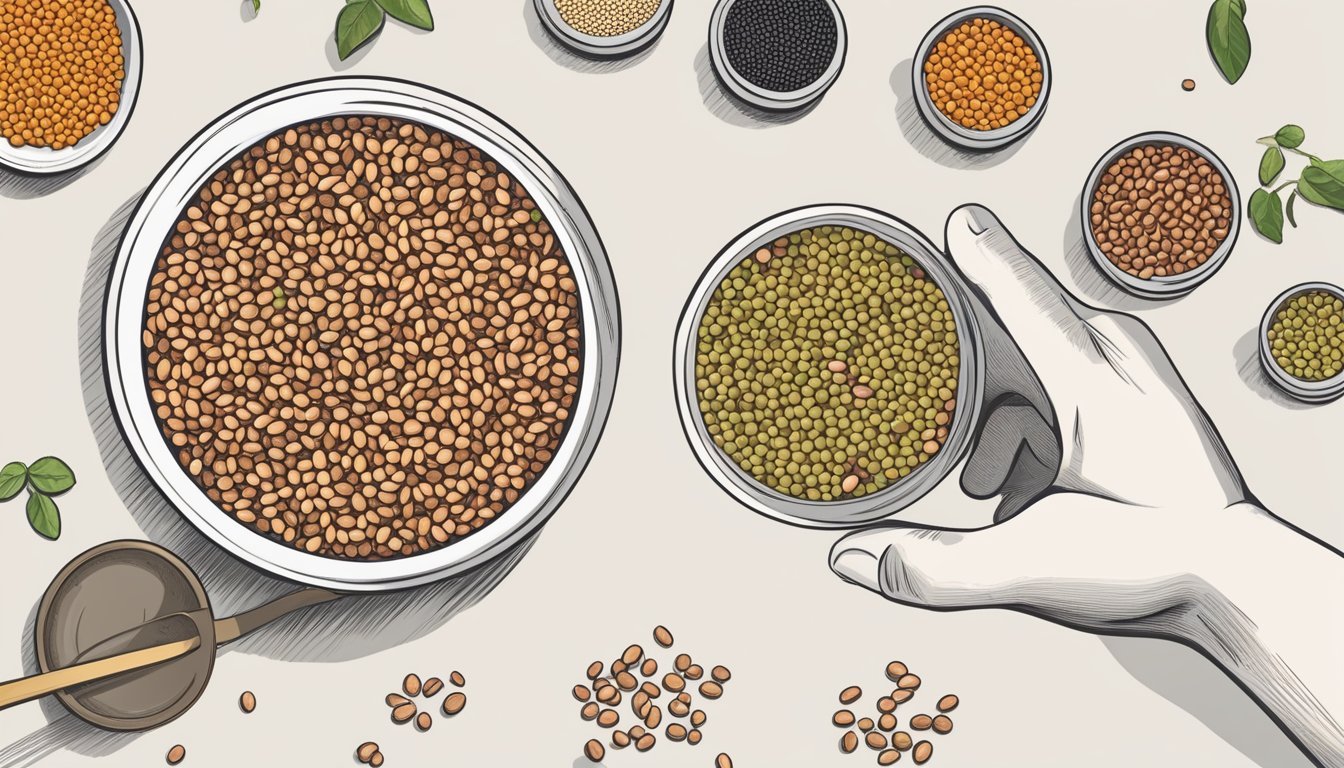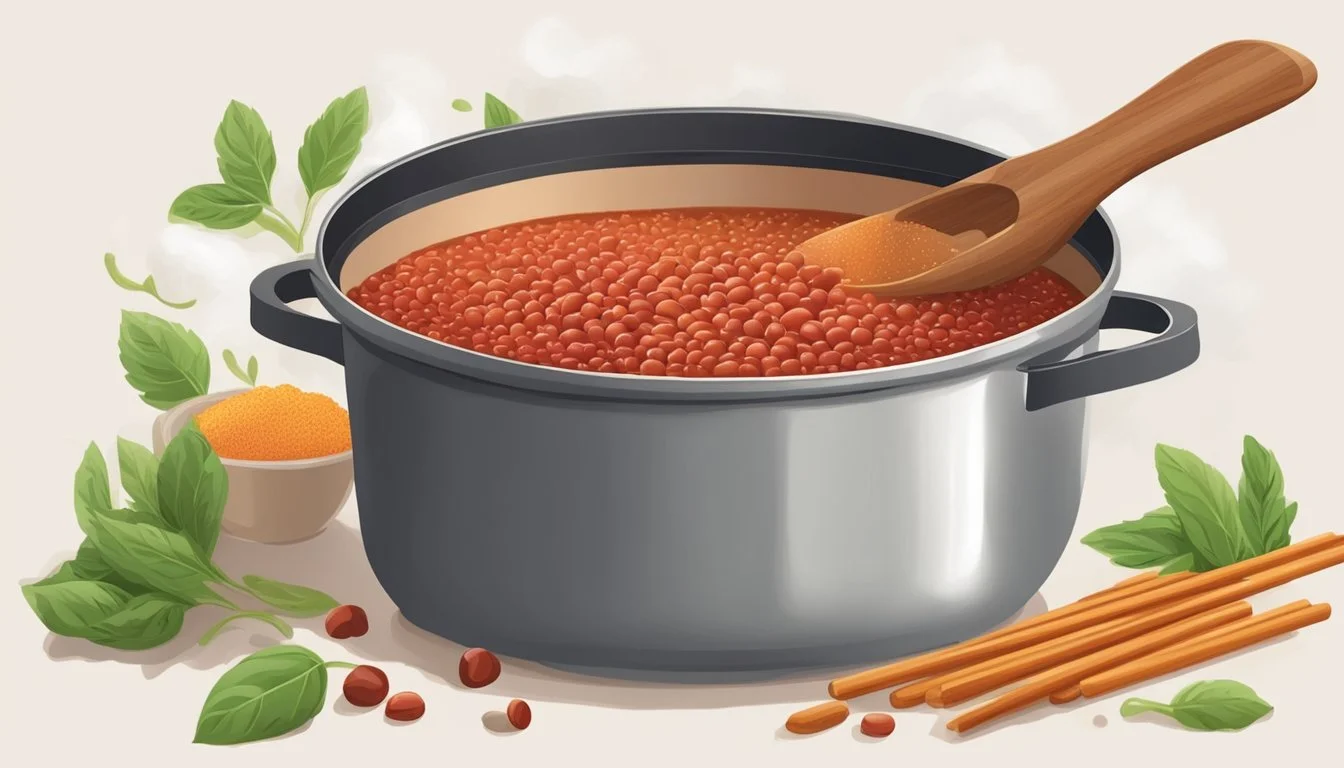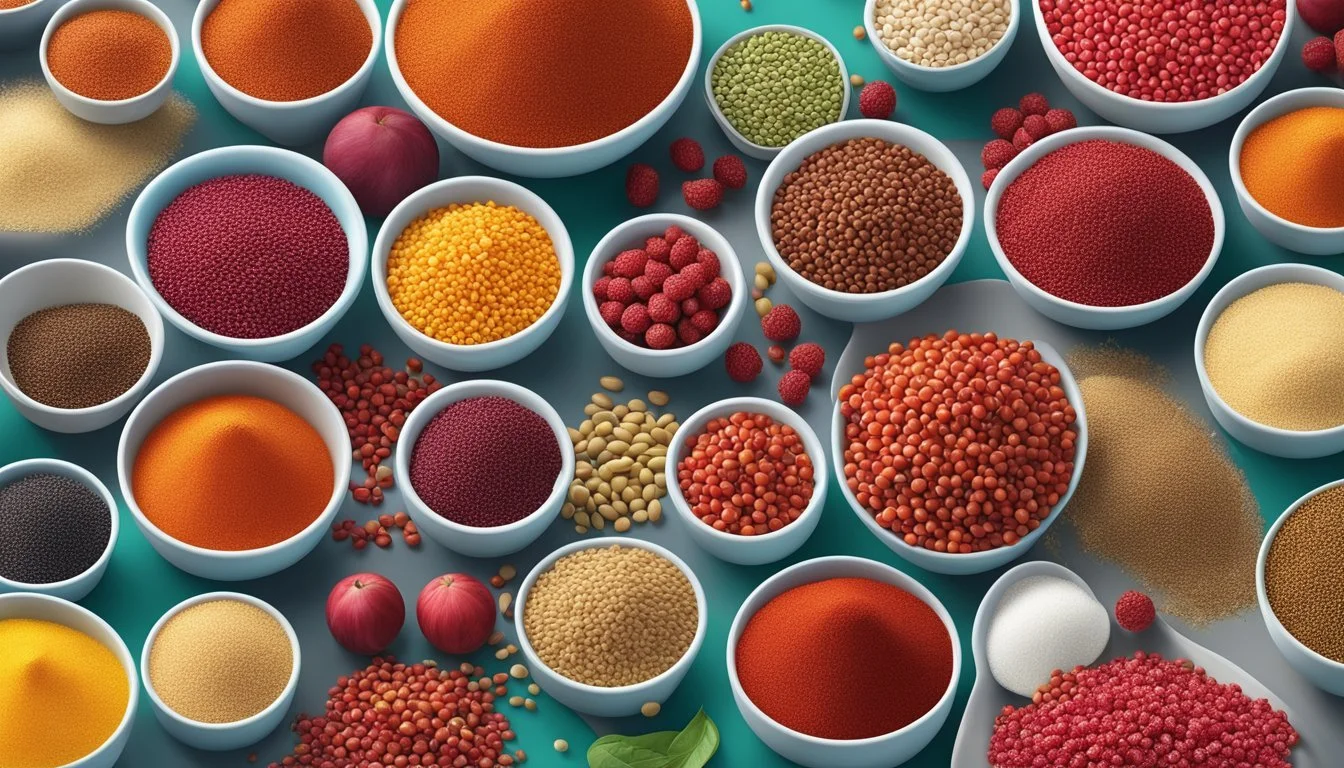Red Gram Substitutes
Best Alternatives for Your Recipes
Finding a substitute for red gram, also known as pigeon pea, can be crucial when you're out of stock or looking for a different flavor or texture. Green gram (moong dal) can be an excellent substitute for red gram due to its similar cooking properties and mild taste. Additionally, black gram (urad dal) offers a robust flavor profile that can complement various dishes just as well.
Chickpeas, another versatile legume, can be used to replace red gram in soups and stews. Lentils, notably red or yellow, also serve as a practical alternative, especially for their quick cooking time and ability to absorb flavors seamlessly. Each of these alternatives brings its unique taste and texture, making them worthy replacements in your cooking repertoire.
Feeling adventurous? Explore mung beans or split peas for a similar earthy flavor and high nutritional value. These substitutes not only match the texture but also enhance the overall culinary experience by adding their distinct nuances.
Understanding Red Gram
Red gram, also known as pigeon peas, is a highly nutritious legume integral to many traditional dishes in Asia and Africa. Its nutritional profile, significant role in cultural cuisines, and unique texture and flavor characteristics make it a staple in numerous diets.
Nutritional Profile
Red gram is a powerhouse of nutrients. It is rich in protein, making it an excellent meat substitute. The legume is also high in fiber, which aids in digestion and helps maintain healthy cholesterol levels.
Vitamins and minerals found in red gram include iron, essential for preventing anemia, and folic acid, crucial for cell formation and growth. Additionally, it contains notable amounts of vitamins B1, B3, and B6, which support metabolic functions.
Role in Traditional Asian and African Cuisines
In Indian cuisine, red gram is a staple in dishes such as dal, where it is cooked with spices and served with rice or bread. It is also used in making sambar, a popular lentil-based stew.
In African cuisine, red gram is often included in stews and soups. It serves as a primary source of plant-based protein and is valued for its ability to complement other ingredients while enhancing the dish's nutritional content.
Texture and Flavor Characteristics
Red gram has a distinctive texture that holds up well during cooking, providing a pleasing firmness and bite in both soft and stew-like preparations.
The flavor is notably earthy and slightly nutty, with a mild taste that allows it to absorb the flavors of accompanying spices and seasonings effectively. This adaptability makes it highly versatile in various dishes, from hearty stews to light salads.
Common Red Gram Alternatives
There are several substitutes for red gram that can provide variety in texture and flavor, such as lentils and beans. These alternatives are versatile and can be used in numerous recipes.
Lentils as a Versatile Substitute
Lentils offer an adaptable alternative to red gram, with diverse types including green lentils, black lentils, and yellow split peas. Each type brings unique textures and flavors to dishes. Green lentils, for example, maintain their shape well and possess a slightly peppery taste, making them ideal for salads and side dishes.
Black lentils or beluga lentils have a smooth texture and an earthy flavor, often used in gourmet dishes. Yellow split peas, known for their creamy texture when cooked, are perfect for soups and purees. Their similarity in cooking methods to red gram makes them a practical substitute in various recipes, including traditional dal preparations.
Beans with a Nutty Flavor
Certain beans can substitute red gram while adding a nutty flavor. Chickpeas, also known as garbanzo beans, offer a rich, nutty taste and a firm texture, making them suitable for stews and salads. Mung beans or green gram (vigna radiata), when used whole or as moong dal, provide a slightly sweet and nutty flavor, enhancing dishes like soups or curries.
Black-eyed peas provide a creamy texture and earthy taste. These are ideal for Southern and Mediterranean recipes. Using beans as a red gram substitute introduces diverse flavors and a similar nutritional profile, which includes essential proteins and fibers.
Other Legumes for Varied Textures
Other legumes also act as excellent substitutes for red gram, offering varied textures to culinary dishes. Chickpeas are a versatile option, available in whole and split forms. They can be roasted for snacks or cooked for curries and salads. Their ability to absorb flavors makes chickpeas a favorite in Indian and Middle Eastern cuisines.
Yellow split peas are another alternative, known for their ability to break down into a creamy texture when cooked. They are commonly used in soups and stews. Mung beans can be used whole or split (moong dal), providing a soft texture and slightly sweet flavor. Whether in savory soups or traditional dal variations, they adapt well to many recipes.
Selecting Substitutes Based on Dish Type
Choosing the right substitute for red gram depends largely on the type of dish being prepared. Each dish type has specific requirements for texture, flavor, and nutritional content, making it essential to select an appropriate alternative.
Soups and Stews
For soups and stews, substitutes need to blend well and maintain a similar texture to red gram. Green gram (mung beans) is an excellent choice due to its similar size and cooking time. It also provides a comparable protein profile and absorbs flavors well.
Yellow split peas are another suitable option. They break down slightly more than red gram but offer a creamier texture, making them perfect for thick soups and hearty stews. Other options include lentils and chickpeas, which add both texture and nutritional value.
Salads and Light Fare
In salads and lighter dishes, the substitute must maintain its shape and provide a pleasant bite. Green gram sprouts are a great choice, offering a fresh taste and crunchy texture. They can be used raw or lightly cooked to add nutritional value and variety.
Chickpeas and black-eyed peas are also viable alternatives. They offer a firmer texture and hold their shape well when mixed with vegetables and dressings. These substitutes not only match the nutritional benefits of red gram but also enhance the salad's visual appeal and flavor profile.
Hearty Main Courses
For hearty main courses like dosa, idli, dal makhani, and curries, the substitute should seamlessly integrate into the dish. Toor Dal (pigeon peas) is an ideal replacement as it shares a similar cooking time and flavor with red gram.
Masoor dal (red lentils) can also be effective in curries and dals as they cook quickly and absorb spices well. Kidney beans and black beans provide a robust protein content and stand up well to rich sauces. They add depth and substance to mains, ensuring the dish remains satisfying.
Baked Goods and Desserts
In baking and sweet dishes, substitutes for red gram should have a mild flavor and smooth consistency. Split chickpeas (chana dal) work wonders in these recipes, blending into batters and doughs without overpowering other ingredients. They are particularly useful in traditional Indian sweets and desserts.
Lentil flour is another suitable option. It can be used in cakes, cookies, and other baked goods to add protein and maintain the desired texture. For recipes requiring a smoother finish, mashed sweet potatoes or pureed beans provide an excellent alternative, ensuring the final product is both nutritious and delicious.
Cooking Techniques for Substitutes
Understanding the cooking techniques for red gram substitutes can affect both the texture and flavor of your dishes. Preparation and cooking times, soaking and boiling, and baking and roasting are key methods that will ensure your substitutes are used effectively.
Preparation and Cooking Times
When substituting red gram, the preparation time can differ significantly. Red lentils, for example, cook faster than green or brown lentils.
Typically, red lentils need about 15-20 minutes to achieve a soft texture, making them suitable for quick soups. Green lentils may require 30-40 minutes to boil.
Proper planning ensures that the ingredients are cooked to the desired texture without becoming mushy. Chickpeas and other beans will need a longer cooking period, often up to 1-2 hours, unless pre-soaked.
Soaking and Boiling
Soaking is a crucial step for many legume substitutes. Chickpeas and kidney beans, for example, should be soaked for 8-12 hours to reduce cooking time and improve digestibility.
Boiling substitutes like chickpeas after soaking can achieve a creamy texture when cooked thoroughly. For red lentils, soaking is not necessary but boiling them in a 3:1 water ratio is advisable. Bay leaves or cumin can be added for an enhanced flavor profile.
It's essential to monitor boiling times to prevent overcooking, as different legumes have varying water absorption rates.
Baking and Roasting
Baking and roasting are excellent methods for adding a crunchy texture to legume substitutes. Pre-cooked chickpeas can be tossed in olive oil and spices, then baked at 400°F (200°C) for 20-30 minutes to achieve a crispy exterior.
Similarly, roasting kidney beans or black beans can add a unique texture to your salads or snacks. Using a combination of baking and boiling can create complex textures and flavors in dishes like casseroles, where a contrast between creamy interiors and crunchy exteriors is desirable.
Proper seasoning during baking, such as with ground cumin or paprika, can significantly enhance the taste.
Gluten-Free and Health-Conscious Alternatives
For those seeking gluten-free and health-conscious alternatives to red gram, there are numerous options available. These alternatives provide similar nutritional benefits while catering to gluten sensitivities and other dietary needs.
Flour Substitutes for Gluten-Free Cooking
When it comes to flour substitutes, rice flour and millet flour are popular choices. Rice flour is a versatile option suitable for baking, providing a delicate texture and a subtle flavor. It is made from finely milled rice and is high in carbohydrates, making it an excellent energy source.
Millet flour, on the other hand, is derived from the small-seeded grasses and boasts a significant amount of fiber. This flour is favored for its slightly sweet, nutty taste and its high nutritional value. It offers a range of nutrients, including magnesium, which is beneficial for bone health.
Quinoa flour is another excellent substitute. Known for its high protein and fiber content, quinoa flour provides a complete amino acid profile. It adds a distinct, slightly earthy flavor to dishes and is ideal for pancakes, muffins, and gluten-free bread.
Ensuring these gluten-free flours are stored properly are crucial since they can go rancid quickly due to their higher fat content.
Nutrient-Dense Legume Options
Legume-based substitutes can also serve as excellent alternatives. They are packed with protein and fiber, making them a nutritious option. Chickpea flour is an uncompromising choice due to its high protein content and subtle, nutty flavor. This flour is prized for its ability to provide a moist texture in baked goods and savory dishes.
Lentil flour offers a high protein and fiber content as well, with the added benefit of being lower in calories compared to conventional flours. Its dense texture works well for making flatbreads and savory items.
For those looking for a flour substitute rich in omega-3 fatty acids, flax flour comes in handy. Made from ground flax seeds, it is often used as a binding agent in gluten-free recipes. It provides fiber and other essential nutrients which are beneficial for heart health.
These legume options contribute significantly to a balanced diet, catering to gluten-free needs while enhancing the nutritional profile of meals.
Enhancing Flavor and Nutrition
Enhancing both the flavor and nutritional profile of dishes when substituting for red gram can be achieved through carefully selected alternatives that incorporate essential vitamins, minerals, and proteins while maximizing fiber intake.
Incorporating Vitamins and Minerals
When substituting red gram, consider options that provide a rich source of vitamins and minerals. Lentils are an excellent choice, offering significant amounts of iron, magnesium, and potassium.
Chickpeas also shine in this category, delivering iron and calcium which are vital for bone health.
Using these ingredients not only matches the nutritional benefits of red gram but also introduces a mild, nutty flavor that can enhance various dishes. Quinoa is another nutritious substitute. It’s a complete protein and offers all nine essential amino acids along with a good amount of iron and magnesium.
Boosting Protein in Meals
For those looking to increase protein content, black beans are a powerhouse option. They provide a substantial protein boost and offer a rich texture and mildly sweet taste.
Green peas are another great alternative, delivering a good amount of protein and a fresh, sweet flavor that can complement soups, stews, and salads.
Edamame and soybeans are also high-protein choices, ideal for those who want to ensure their meals are hearty and satisfying. These substitutes do not only match the protein content of red gram but can often exceed it, making them perfect for protein-rich diets.
Maximizing Fiber Intake
Fiber is crucial for digestive health and maintaining a balanced diet. Split peas are an excellent source of dietary fiber, contributing both soluble and insoluble fibers, which aid in digestion and promote a feeling of fullness.
Kidney beans are another high-fiber choice. They enhance the fiber content of any meal and offer a distinctive, nutty flavor.
Brown rice is also a strong contender for maximizing fiber intake. Though primarily a carbohydrate source, its high fiber content and slightly nutty taste make it a versatile ingredient in various recipes.
By thoughtfully selecting substitutes that enhance flavor and nutrition, you can create delicious meals that not only taste good but are also nutritious.
Cooking Equipment and Techniques
Achieving the right consistency and texture when substituting red gram involves the use of proper kitchen tools and understanding thickeners' roles. It also requires attention to the consistency of the final dish.
Using a Food Processor or Blender
A food processor or blender can be invaluable when working with red gram substitutes. These appliances help achieve a smooth, creamy texture crucial for dishes such as soups and dips. By blending ingredients like lentils or chickpeas until smooth, cooks can closely mimic red gram's consistency.
When using a food processor, it's important to pulse in short bursts to avoid over-processing. For blenders, gradually increasing speed ensures a uniform texture without air pockets. These techniques are essential for maintaining the soft texture characteristic of red gram-based dishes.
Effective Thickening Agents
Thickening agents are vital when red gram substitutes don't naturally achieve the desired consistency. Common thickeners like cornstarch, arrowroot, and flour can help. One tablespoon of cornstarch mixed with a tablespoon of cold water can thicken soups and stews effectively.
For a creamier texture, consider using pureed vegetables such as potatoes or carrots. These not only thicken the dish but also add a rich flavor. When using these thickeners, it's crucial to stir constantly to avoid lumps and ensure a smooth, consistent result.
Considerations for Consistency
Consistency plays a significant role in the success of red gram substitutes. Achieving the right texture involves balancing the moisture and dryness of the substitute. Adding small amounts of liquid, such as broth or water, can help if the mixture is too dry.
On the other hand, simmering the dish for a longer period can reduce excess moisture, ensuring the desired consistency. Regularly check the texture during cooking, and adjust as necessary by either adding more liquid or allowing the dish to cook longer. This careful attention guarantees that the substitute will closely replicate the texture of red gram.
Culinary Influence
Red gram substitutes significantly shape vegetarian cooking and Indian cuisine, bringing variety and adaptability to traditional and contemporary dishes.
Impact on Vegetarian Cooking
Vegetarian cooking often relies on legumes as a staple source of protein and texture. Red gram, also known as arhar dal, is a key ingredient in many dishes.
When substituting red gram, options like lentils, chickpeas, and black beans are popular choices. Lentils provide a similar texture, making them an excellent 1:1 replacement. They cook faster and have a mild, earthy flavor.
Chickpeas offer a slightly firmer texture and a rich, nutty taste. They are versatile and commonly used in soups, stews, and salads. For a different taste profile, black beans bring a robust and hearty flavor, enhancing a variety of vegetarian meals.
These substitutes ensure that vegetarian diets remain nutritious and diverse, meeting dietary preferences and nutritional needs.
Influence of Indian Cuisine
In Indian cuisine, red gram is crucial for making dal, a staple dish. When red gram is not available, substitutes like split peas, yellow lentils, and masoor dal come into play. These alternatives maintain the traditional flavors and consistency of dishes.
Split peas have a mild flavor and create a smooth texture when cooked. This makes them a suitable substitute in dals and curries. Yellow lentils, also known as moong dal, cook quickly and blend well with Indian spices, offering a slightly sweet taste.
Masoor dal is another common substitute. It has a quick cooking time and a smooth, creamy consistency, fitting perfectly into Indian culinary traditions. These substitutes ensure that the essence of Indian cuisine is preserved, even when red gram is not available.
Conclusion
Red gram, a staple in many cuisines, can be substituted by various legumes and grains when not available.
Options like chickpeas, black beans, and lima beans bring unique flavors and textures to dishes. Chickpeas offer a nutty taste, black beans add richness, and lima beans provide creaminess.
Green peas and mung beans are also viable alternatives that can preserve the integrity of many recipes.
When choosing a substitute, consider the specific culinary application. For soups and stews, kidney beans and white beans are excellent choices due to their robustness.
For lighter dishes like salads, navy beans and adzuki beans are particularly well-suited.
It's essential to adjust cooking times and methods accordingly. Some substitutes may require soaking or longer cooking periods.
Incorporate spices and seasonings to enhance the flavor profile of these substitutes and better match the desired outcome of the original recipe. This thoughtful approach ensures that the final dish retains its intended character and taste.
Using these alternatives not only provides flexibility in cooking but also introduces new nutritional benefits and culinary experiences.
Experimentation can lead to delightful discoveries and broaden one's repertoire of dishes. By understanding the properties of each substitute, one can make informed decisions that enrich their culinary creations.










